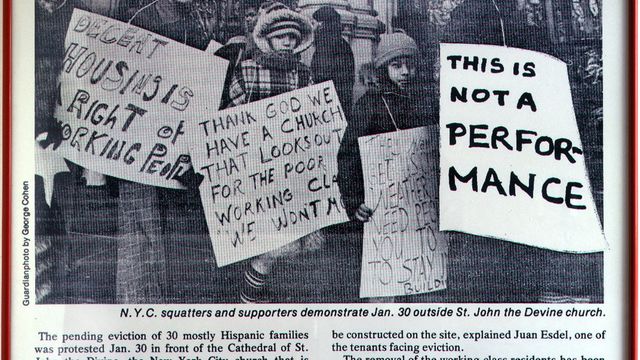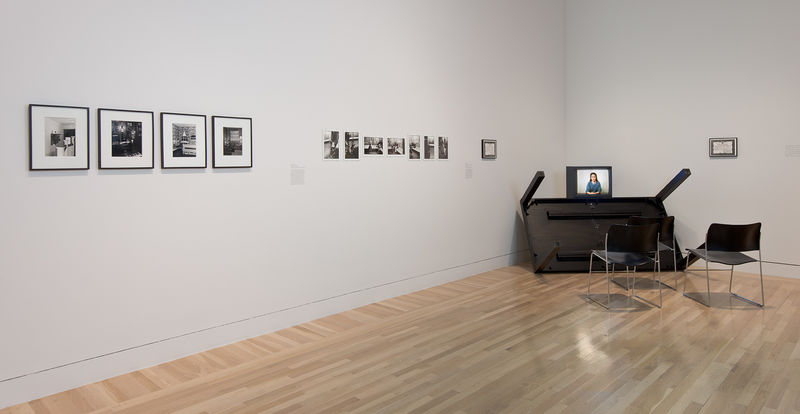
Adrian Piper
Through performance, video installation, photography, drawing, and text, Adrian Piper provocatively analyzes cultural biases and their impact on the individual. While studying art at the School of Visual Arts in New York and philosophy at City College of New York in the late 1960s, Piper became an important early practitioner of conceptual art and, later, an analytic philosopher, receiving her PhD from Harvard University in 1981.# Using idea-based artworks to critically enact race, gender, and class identities, Piper challenges the universal and neutral subject positions so often assumed in art, philosophy, and mass media.
In the early 1970s Piper carried out numerous public performances in which she dramatically transformed her appearance by covering herself with wet paint (Catalysis III, 1970) or by dressing as a young man of color, donning an Afro wig and moustache (Mythic Being, 1973–75) to expose xenophobic and hostile reactions among those she encountered. In 1976 Piper made This Is Not the Documentation of a Performance by rephotographing a newspaper article about a protest against the eviction of Hispanic families from a Manhattan building and replacing the text of one of the picketers' signs with "This Is Not a Performance." This work subtly rebukes those who dismissed Piper's prior performances as fictions, implying that her actions, like those of the protesters, rendered visible experiences of injustice and alienation often obscured by decorum, social norms, and those in power.
For her Vanilla Nightmares series of charcoal drawings, Piper appropriated pages from the New York Times and added figural scenes that elaborate and contradict the newspaper's discussion of racial issues. Vanilla Nightmares #10 (1986) shows the hand of a large, dark figure wrapping around the neck of a smaller, lighter figure with deep wrinkles, upturned eyes, and a gaping mouth. The figures, in their awkward and threatening embrace, cover most of the page, but Piper leaves sections translucent to highlight a story about white farmers profiting in Zimbabwe and another with the headline "U.S. Goal in South Africa: Leverage." The opposition between the articles and the drawings ("vanilla nightmares") emphasizes the white privilege that underlies the newspaper's point of view.

—Ruth Erickson


